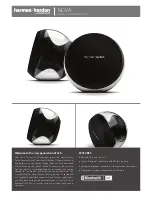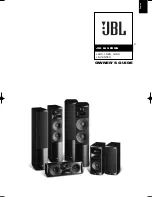
12
You might program an IFB on listen key #1, but no talk
key #1.
Keys 2 to 7 may also be programmed. To use the
other keys from the phone, just press the DTMF button
for the key you wish to use. For example, if key #1
was the camera PL, and you have finished with the
shot, you may press #1, which will toggle off key 1. If
master control were programmed on key #2, you may
then press 2 and call master control. Likewise, you
might have an IFB programmed on listen 3, with no
talk. If you press 3, you will hear the IFB. #4 could
have an IFB talk on it, to allow a caller to speak on an
IFB circuit.
Each DTMF button acts as if it were a push ON/ push
OFF switch. When programming in AZedit, program
the same key number as the number the user is going
to press on the telephone to speak.
Talk keys 8 to 15 have a special purpose. If you are
not using auto answer mode, but have set up the TIF-
4000 to be manually answered, talk keys 8 to 15 will
be programmed for the keypanels which are to receive
the ring signal. They may also be toggled ON and
OFF from the phone by DTMF 8, so they may be used
in auto answer mode as well. You may program only
key 8, in which case it will behave the same as keys 1-
7. You may also program additional keypanels, PLs,
IFBs, etc. on keys 9-15, and they will be activated
simultaneously by the 8 button on the phone.
MANUAL ANSWER MODE
In
manual answer mode
, the line will ring until it is
answered from a keypanel. In general, you must
designate panels which are to receive the ring, so they
can answer the line. When a line is manually an-
swered, the caller does not have to enter a password,
even if the password required switch is turned ON.
You may mix modes by enabling auto answer, but
setting the ring count for 8 rings. If no user has
answered the call by 8 rings, the TIF-4000 will then
automatically answer the call, and if the password
required is enabled, the call will be screened by
requiring a password.
To use manual answer mode, you may choose to
program keys 1 to 7 as above if you wish. When the
phone is manually answered, key 1 will not be auto-
matically activated, but the caller may activate any of
the keys if he wishes.
You must also designate the panels which are going to
ring when the line rings. Program these panels on
keys 8 to 15, using both L1 and L2 if you have more
than 8. It is generally not necessary to program the
listen keys on these positions. When the line rings, the
TIF-4000 will “call” these panels when the line is ringing.
The TIF-4000 generates a ringer noise which is then
transmitted to these panels. The panels will display the
TIF-4000’s alpha numeric in the incoming call window
(CWW), and if a talk key has already been programmed
on the panel, its alpha numeric will flash rapidly.
Using the TIF-4000 From the Telephone
The TIF-4000 will behave differently depending on how
it is programmed. It is up to the operator who pro-
grams the TIF-4000 to convey to the user what to
expect. If the user is not familiar with the operation of
the TIF-4000, it is best to keep the operation as simple
as possible. For this reason, it is suggested that you
not use password required unless you have had
problems with nuisance calls in the past. If the TIF-
4000 field user only requires one service, it is best to
program that service on key 1, enable auto answer,
and disable password requires. The telephone user
will then only have to dial the proper phone number to
use the interface. As they become more familiar with
its operation, you can then begin to offer more options
to the users, or begin to require a password.
When calling in, if the unit is in auto answer mode, it
will answer the call after the number of rings which
have selected. If password required is not enabled,
the unit will indicate it is ready with a single beep. If
password required is enabled, the TIF-4000 will
prompt for a password with 2 beeps. The user will
enter the password, and the unit will either beep once
if the password was correct, or twice if is wrong. The
user is allowed 3 attempts to enter the password, after
which the TIF-4000 will disconnect. In the event a user
calls the TIF-4000 when the intercom system is either
turned OFF or absent, the TIF-4000 will answer and
prompt with 3 beeps.
Once the password is entered, the TIF-4000 will
enable talk and listen on key 1. This should be pro-
grammed ahead of time to whatever communications
the caller generally needs first. If it is not desirable for
the caller to be able to talk at this point, then only the
listen key for key 1 should be programmed.
The caller may then either continue to use key 1 or
select other keys with their DTMF pad. They may turn
off key 1 by pressing DTMF 1, or may continue to add
other keys. At any time, the caller may turn off all keys
without hanging up by pressing 0. When the call is
complete, the caller should enter*#, which will cause
the TIF-4000 to disconnect. This is more reliable than
waiting for the phone system to pass the disconnect
information to the TIF-4000.
Summary of Contents for TIF-4000 Frame
Page 18: ......




































